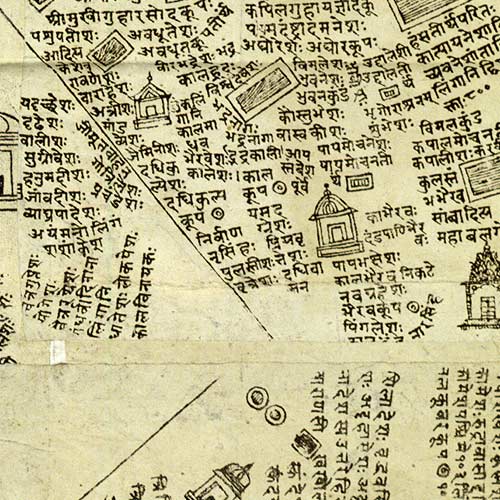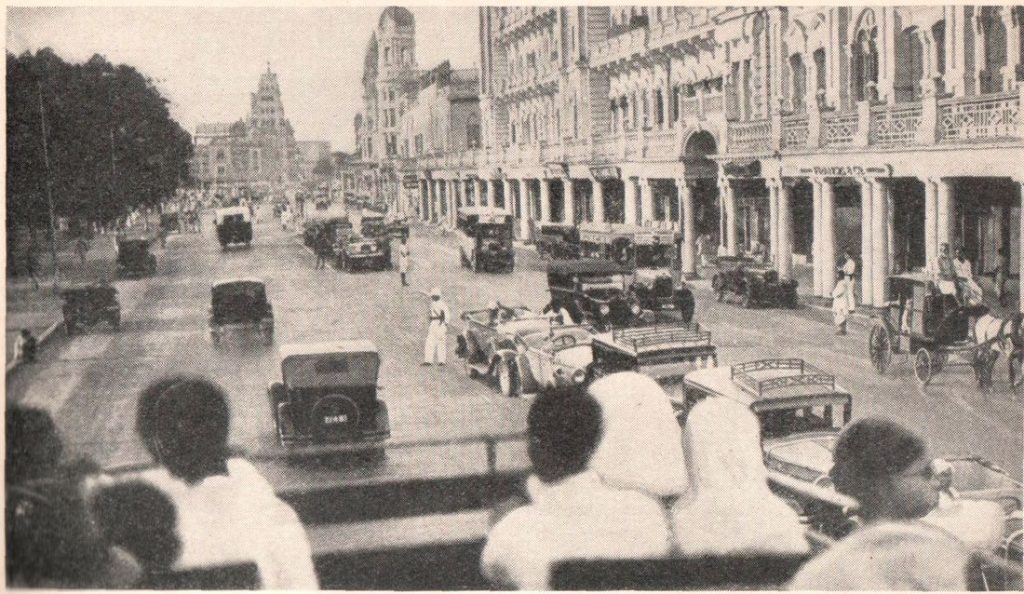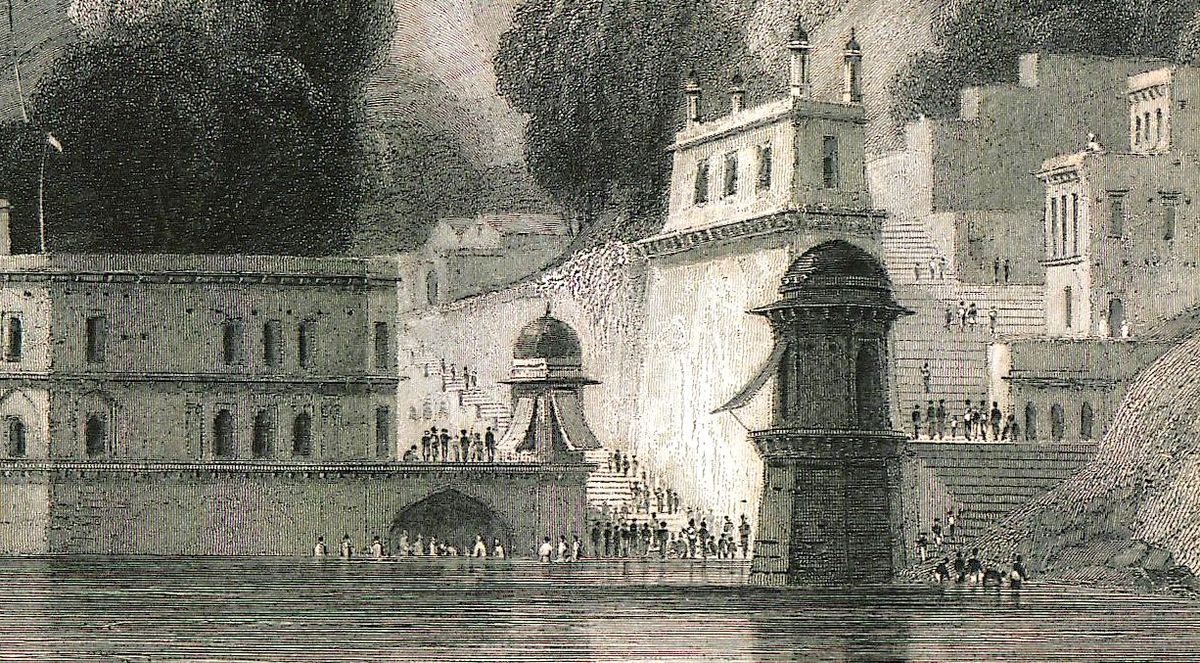Built Bharat: the Modern Derangement
The India of the 1960s and 1970s which, as was often repeated in public discourse, concentrated mostly in its villages, was already looking to its big cities for inspiration and guidance in matters of style and form. The generation that had lived through the freedom period was a young one, and the choices they faced in the metropolitan centres and second tier cities was already wider than those on offer in the era of their parents and grand-parents. There was a public sector that was being established. There were new vistas in professional fields such as medicine, law and engineering (the advanced instruction in these being based on Western models). Advertising and marketing sectors had started to find voice through radio and monthly magazines.
It was in these times too that a new discipline came to be known in India. That discipline included town and country planning, architecture and the administration of urban settlements. The Indians who were at the time the neophytes in this discipline were swept up by what began to be enunciated in the 1950s as the great envisionings of a New India, described through government-produced publications heavy with black-and-white photographs, short documentaries produced by the Films Division (and which it seemed were required more to be stirring than to be enquiring), and especially through the first few of the Five Year Plans.
The mood was redolent with the end of colonialism and the emergence of new countries. Through an axis that connected newly independent countries in Asia and Africa, ‘panchsheel’ was being regarded as a seminal contribution to an outlook on international relations that appeared to integrate a view of tradition with a view on modernity. The macro-economics of the time – influenced by the Soviet Bloc and to a lesser degree by the liberal-socialisms of Western Europe – was very much more indistinct, and the notion of the public sector occupying the “commanding heights” of the national economic landscape reflected this foggy institutional view.
The effect, on the re-making of existing cities and towns more than the making of new ones, was profound. India’s new class of urban planners, architects, town planners, urban development authorities and agencies, transport and mobility experts, economics consultants and the like were encouraged to espouse a new-built urban form as representing democracy through a distinct break from tradition, heritage and the traditional social organisations. At the same time, this new group – schooled well by the West, for they were more familiar with the public roles of the market squares of Renaissance Italy and the agoras of classical Greece than they were with our mandis and temple-towns – interpreted concepts that were held out as new, such as habitat, equity and sustainability and considered themselves the executors of the new urban forms of India.
All but lost amid the growing hubbub of 1960s and 1970s urban India was the evidence and indeed the memory of what had existed before, even though the merest traces could be gleaned from secondary school textbooks, which extolled the observational powers of ancient foreign travellers but which neglected to mention the works of Hindu origin that had guided the creation of what was being observed. One such observation was that of Megasthenes, who had described the working of Mauryan municipal administration and its town officials:
“Those who have charge of the city are divided into six bodies of five each. The members of the first look after everything relating to the industrial arts. Those of the second attend to the entertainment of foreigners. The third body consists of those who inquire when and how births and deaths occur, with the view not only of levying a tax but also in order that births and deaths among both high and low may not escape the cognisance of government. The fourth class superintends trade and commerce. Its members have charge of weights and measures, and see that the products in their season are sold by public notice. The fifth class supervises manufactured articles, which they sell by public notice. What is new is sold separately from what is old, and there is a fine for mixing the two together. The sixth class consists of those who collect the tenths of the prices of the articles sold. Fraud in the payment of this tax is punished with death.” [i]

A section from the map, Kasidarpana, drawn by Kailashnath Sukula, and printed in Varanasi in 1876 at the Vidyodaya press. (Courtesy the Varanasi Research Project, University of Heidelberg, and South Asia Institute).
The planners, architects, agencies and administrators of the cities and towns of post-Independence and pre-Liberalisation India spared barely a glance at the sort of organisation that Megasthenes had described some 2,250 years earlier. Had they done so, they would have found that the habitat, equity and sustainability ideas which they claimed were introduced to urban India as a result of their work, were very well known then indeed.
In any case they were far too occupied, the form-givers of modernising India, and preferred to take as their urban totems Fatehpur Sikri, founded in 1571 and celebrated for a layout that was called the “organisation of built forms around open spaces”, but which was abandoned in 1585 because of a lack of water; Pondicherry, founded in 1674 and designed according to French-Dutch grid patterns (neat sectors and perpendicular streets); and Jaipur, founded in 1727 by Maharaja Sawai Jai Singh, laid out in six sectors separated by broad streets. There was also much more recently from the standpoint of the 1960s, New Delhi, which can be taken as springing into form in 1911 when the capital of British India moved there from Calcutta, and whose architect was Edwin Lutyens, who favoured an arrangement of national institutions and landmarks around wide tree-lined boulevards.

Chowringhee, the residential road, in Calcutta, from ‘Wonderful India And Three of Her Beautiful Neighbors: Ceylon, Burma, Nepal’, The Statesman and Times of India Book Dept., 1940.
For over a generation – from 1946 to 1972 – the idea of the modern city of India was being translated into cement, paving, and homogenous dwelling units all arranged grid-wise and roughly equidistant from distinct public spaces, institutional areas and parks. There were Bhubaneshwar, founded in 1946 with Otto H Königsberger (German) as architect, built for the workers of Tata Iron and Steel, newly independent India’s first modern industrial city; Kolkata’s Salt Lake, founded in 1958 with Dr B C Roy, the then chief minister, being instrumental in formulating the plan to build a satellite residential area on a swampy zone east of old Calcutta, with Dobrivojo Toscovic (Yugoslav) as architect; Chandigarh in 1966 whose celebrated architect, the French-Swiss Le Corbusier, used as the basis for his plan a circulation pattern which integrated in its first phase 17 sectors.
There were Gandhinagar, built through the 1960s, whose architects were H K Mewada and Prakash M Apte, planned as Gujarat’s new capital and which took as inspiration for its highly structured layout both Chandigarh and Bhubaneshwar; Auroville in 1968, the ‘City of Dawn’ arranged by its own residents as an experimental and universal town for people of all countries, and celebrated by UNESCO; K K Nagar of Madras in the 1970s built by the Madras Metropolitan Development Authority with 14 sectors divided by 120 streets; New Bombay in 1972, conceived and built specifically to decongest Bombay and serve eventually as more than a satellite town, constructed by CIDCO; and Delhi’s NOIDA in 1976, planned as a modern extension to Delhi and built by the UP Industrial Area Development Authority.
What was known as the International Style was in vogue, as pointed out by conservation architect and urban planner A G Krishna Menon in ‘Architecture In India: The Tryst With Modernism’ (for the National Seminar on Culture and Development, organised by the Centre for Cultural Resources and Training (Ministry of Culture), 1997), “and the architect in India felt compelled to demonstrate allegiance to its principles”. Menon mentioned “structural regularity rather than axial symmetry” as being the principal means of ordering design in this approach, and this derives very much from the post-Second World War industrialisation of the west, with its partiality to standards and reproduceability rather than expression. He also mentioned a feature of this school being the avoidance of applied decoration to buildings which were alien to the building traditions of Bharat and to the desire for ornamentation. Such considerations were not even entertained because the objective was in fact to shed what were disparagingly called the shackles of tradition.

A 1950s residential building in central Mumbai, photographed in 2018, its facade littered with grilles, air-conditioners old and new, and with evidence of ad-hoc restoration and repair on every floor. (Photo: author)
Using the new urbanform language of the West and complementing it with a concept new to a Bharat not even a decade independent – that of ‘heritage’ – the visionaries and contractors of the Modernising India project successfully obscured tradition. The planned cities (or expansions in some cases) which so enthralled the Modernisers, who called upon the jumbled rhetoric of Jawaharlal Nehru as being the terms of reference that governed their commissions, were all, every single one of them, conceived and built as India’s journey westwards, away from a tradition which with every passing year and every new sector built and every blocky, characterless new public building occupied by administrators, was being pushed into obscurity. It was a collective historical dastardliness whose effects are – three generations forward from when it began – neither properly understood nor acknowledged.
The Modern Indian built environment rose relatively quickly – relative for a civilisation whose empires and kingdoms had fashioned and occupied built environments from twenty centuries before 0 AD – but unlike its predecessor eras, it was the only one which deliberately detached itself from what had gone before. In doing so, the mercantile and industrial modern town of the late 19th and early 20th century British India, and the new city and new city extensions of Modern and independent India, tore itself away from a tradition whose philosophy of spatial extent (as kshetra) and of a region of identity (as desa) had determined how and why these could be occupied, under what kind of conditions, and using which materials, both mundane and artistic. It is this derangement, now a century-and-a-half old for some of our urban centres, that continues to cripple our metropolises and towns.
This derangement can be seen – certainly from the 1940s, when the transfer of power to an imminently independent India was being negotiated, to the 1980s, when the tug of ‘free trade’ became more insistent – as one of the physical manifestations of the change in India’s public intellectual temperament. The change had to do with two kinds of formations, the Congress party and the Communist parties (the original CPI and then the CPI-M), and the manner in which they directed, while seemingly at opposite ends of the political spectrum, policy and institutions especially in the areas of education, culture and history, labour, and economic policy. “In spite of their record during the Independence Struggle, it is to the Macaulay-Missionary-Marxist class that power devolved after 1947,” wrote Arun Shourie in ‘Eminent Historians’ (1998). Therefore they accompanied each other, the twin derangements – one by the built and spatial Modern India, the other by cultural and intellectual Modern India, from the traditions and knowledge systems of Bharat, and like the choked confusion found in our towns and cities today, the effects of both kinds continue.
And therefore where in the Ramayana we can find names of classes of artisans such as the bhumi-pradesajna (persons with knowledge of soil), carmakrt (shoe-makers), citrajna (painters), daivajna (astrologers), dantakara (ivory workers), dhupaka (fumigators), drastarah (guides), gandharva (musicians), gandhopajivin (incense-makers), gayaka (songsters), kambala karaka (makers of woollen fabrics), karnadhara (vessel pilots), khanaka (miners), krakacika (carpenters and wood-workers), kumdhakara (potters), magadha (genealogists), manikara (jewellers), marga-sodhaka (road layers), mayuraka (magicians), panivadaka (tabla players), paranika (chroniclers), rajaka (cleaners and dyers), sastropajivin (armourers), saundika (brewers and wine sellers), silpakara (artists), sthapati (architects), sutra-karma-visaradha (tailors), suvarnakara (goldsmiths), vadaka (instrumentalists), vanik (traders), viswakarma (engineers) and yajaka (priests) [See S N Vyas in ‘India in the Ramayana Age’, 1988] . In late British India industrial period and in modernising India stripped of their inherited knowledge, social and religious roles, detached from their typical social settings, called merely ‘workers’ or ‘labour’ and even ‘proletariat’, and herded into dingy blocks of chawls or bleak and remote factory townships.
This is the setting from which the following two articles in this series will outline the arts and philosophical determinants that guided the built environments of Bharat, from Harappan times to late British and Modern India. These will show that from being a vast region with a multiplicity of built forms, architectural schools, profound considerations of what inhabited space is and how it is to be treated, and superlative nagaras in which all these disciplines and views found expression and purpose, the urban India of today has lost the sundaram, the Bharatiya aesthetic, which illumined it for so long.
[i] ‘The Age of Imperial Unity’, Chapter IV, Chandragupta and the Mauryan Empire, by Radha Kumud Mukherji, Volume Two of the History and Culture of the Indian People, Bharatiya Vidya Bhavan.

